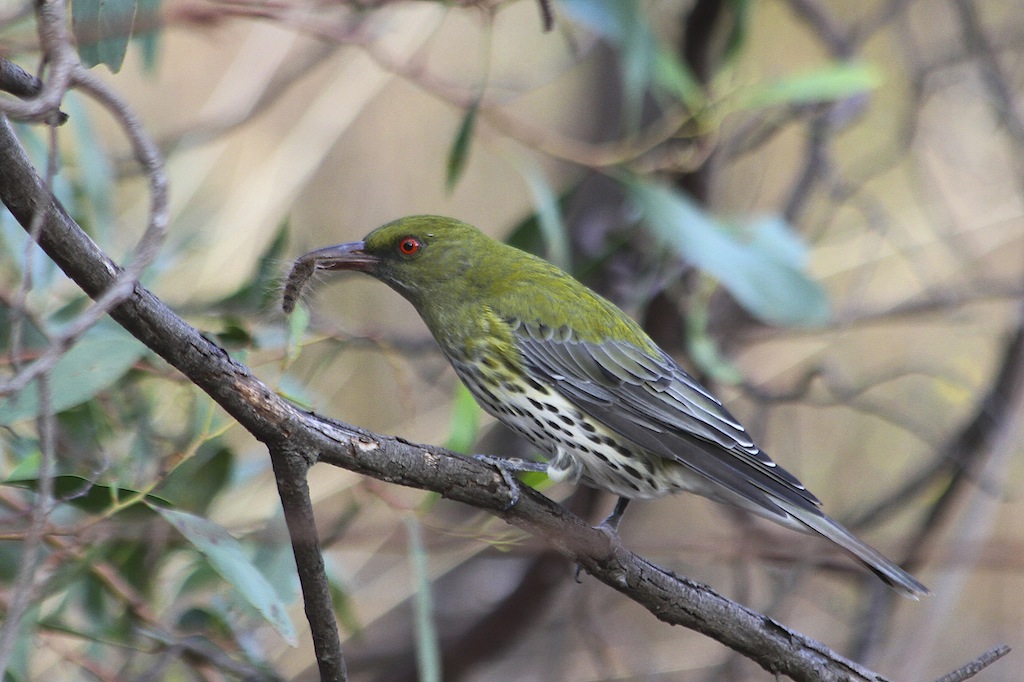
Oriolus sagittatus
TAXONOMY
Coracias sagittata Latham, 1802, “Nova Wallia Australi” = central
coast, New South Wales, Australia.
OTHER COMMON NAMES
English: Green oriole, white-bellied oriole; French: Loriot
sagittal; German: Streifenpirol; Spanish: Oropйndola de Lomo
Olivo.
PHYSICAL CHARACTERISTICS
10.2–11 in (26–28 cm); 3.5–3.8 oz (90–105 gm), both sexes.
Plain olive upperparts; wings and tail dark gray with white
edging. Whitish underparts with dark steaks. Eyes red.
DISTRIBUTION
Coastal and subcoastal northern and eastern Australia up to
about 500 mi (800 km) inland, between Kimberley Division
and Victoria, also dry south New Guinea.
HABITAT
Open eucalypt forest and tall woodland; also paperbark
(Melaleuca) woodland in north Australia and New Guinea.
BEHAVIOR
Solitary in forest/woodland canopy, pairing only to breed.
Gives low carrying glottal warble from set perches throughout
year, and incessantly, with mimicry, when breeding. Widely
nomadic after breeding.
FEEDING ECOLOGY AND DIET
Forages opportunistically on small soft fruits in trees and tall
shrubs and on insects such as leaf beetles, mantids, ants, and
caterpillars; mostly captures prey while quietly hopping and
gleaning upper and outer branches of trees.
REPRODUCTIVE BIOLOGY
Monogamous; female builds nest (about 14 days) and incubates
(17–18 days), but both sexes feed young, fledging them in
15–27 days.
CONSERVATION STATUS
No populations under significant threat anywhere.
SIGNIFICANCE TO HUMANS
None known.
Other popular Animals
Photo Gallery of - Olive-backed oriole




 Animalia Life
Animalia Life